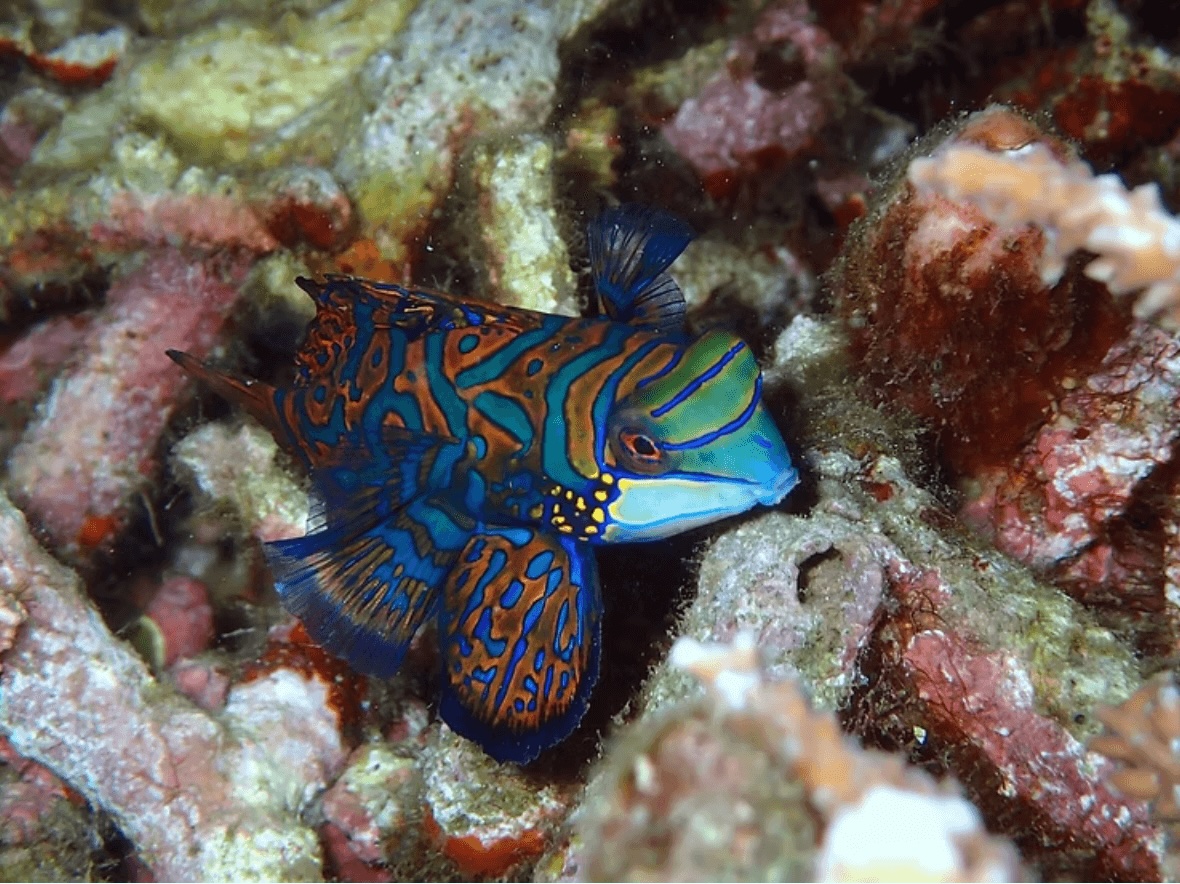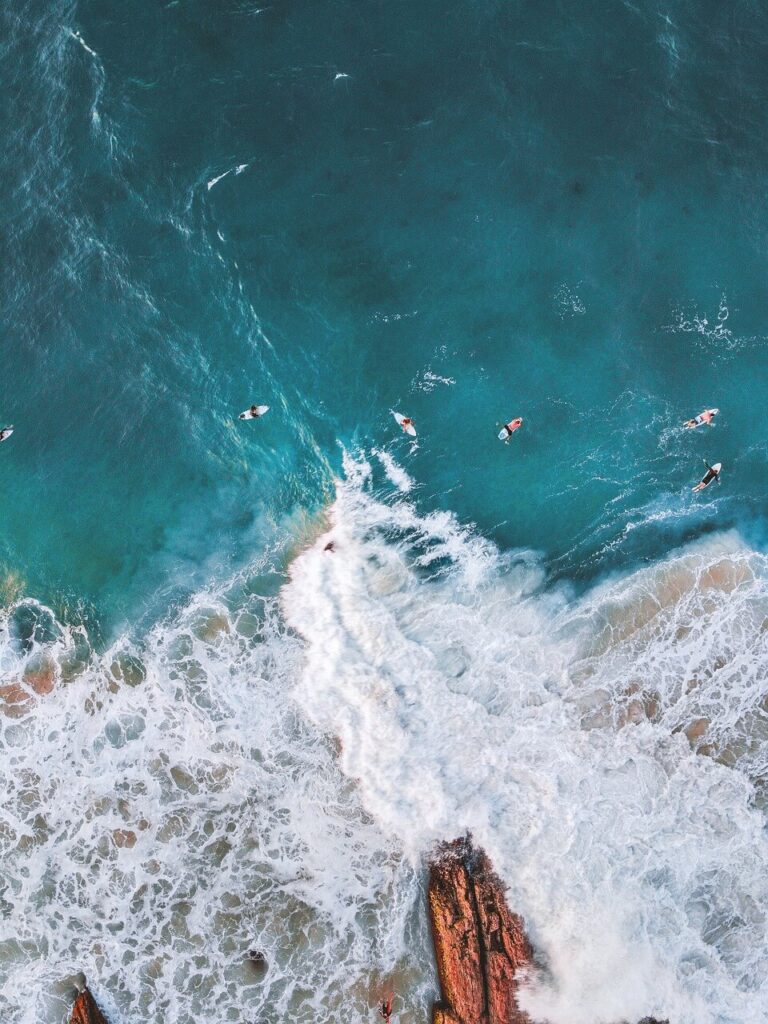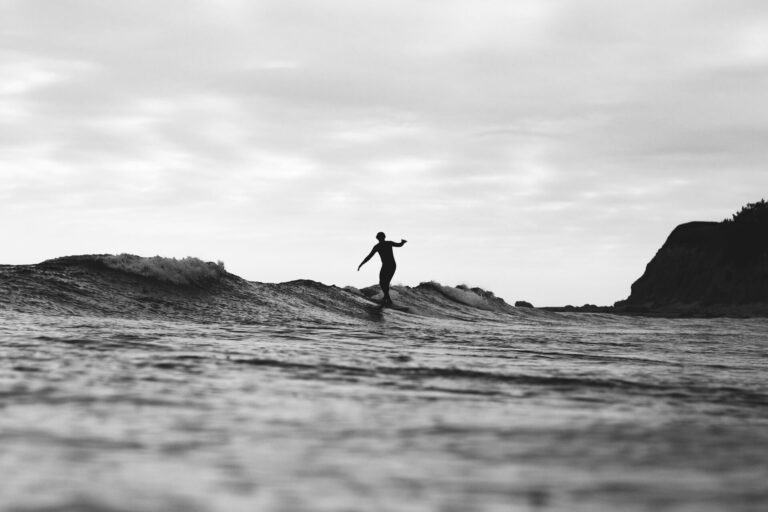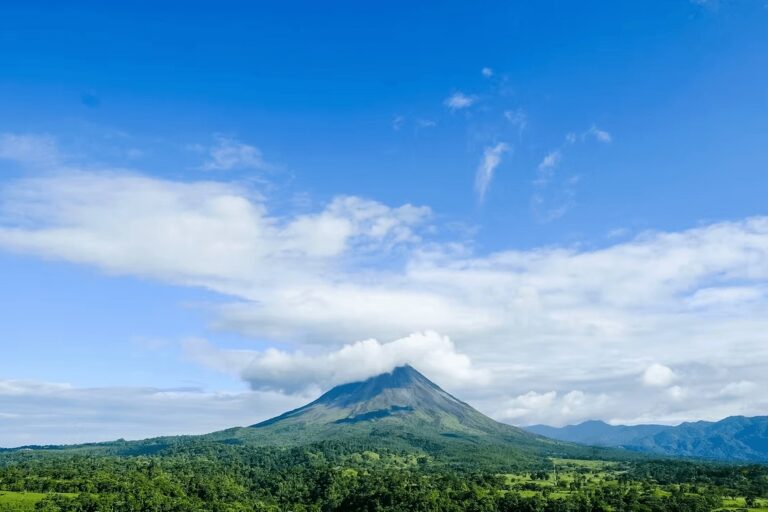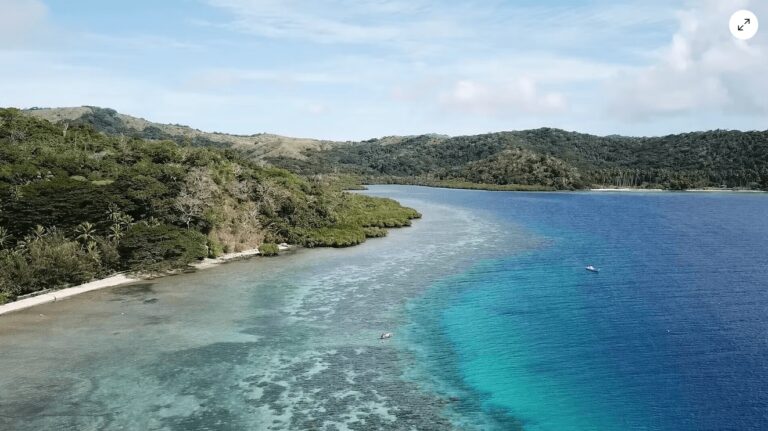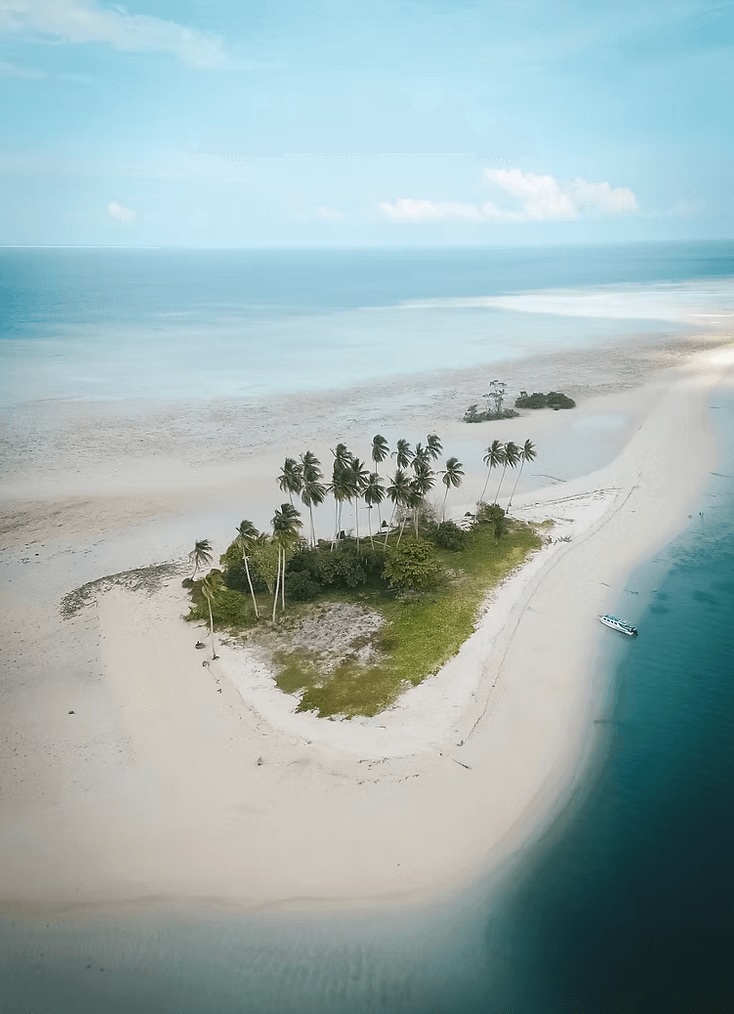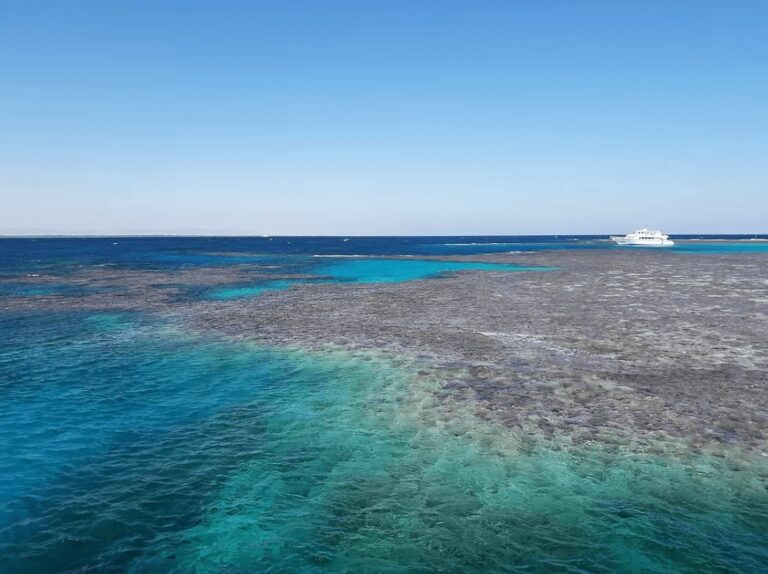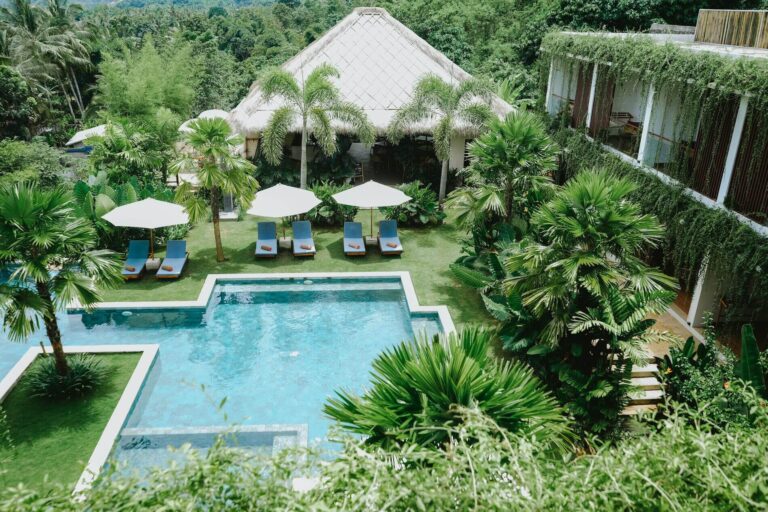Scuba Diving in Lembeh Strait: Best Dive Sites + Eco Dive Resorts
Looking for the best dive sites in Lembeh Strait? Discover everything you need to know about scuba diving in Lembeh in this sustainable scuba guide to Sulawesi.
It’s no secret that Lembeh Strait is considered a mecca for underwater photographers and macro enthusiasts visiting Southeast Asia.
Known as the “muck diving capital of the world,” this unique stretch of water off the northeastern tip of Sulawesi provides a habitat for a mind-boggling array of rare and bizarre marine creatures.
This includes everything from frogfish and mimic octopuses to delicate seahorses and colourful nudibranchs. The sheer diversity of macro species found here is truly staggering!
While Lembeh may not boast the colourful coral reefs found elsewhere in Indonesia, the sheer density of critters more than makes up for it. Lembeh muck diving is arguably the best in the archipelago!
The dark volcanic sand that blankets the seafloor offers the perfect backdrop for underwater photography. It also provides a nutrient-dense environment for macro species to thrive.
The calm conditions and lack of strong currents contribute to Lembeh being such an incredible macro photography destination. Additionally, the guides who work here are experts in spotting even the most elusive and well-camouflaged creatures.
In this article, we’ll explain everything you need to know about scuba diving in Lembeh Strait, including what you can expect to see and the best time to visit. We’ll also introduce some of the best dive sites in Lembeh Strait and eco-friendly places to stay, helping you plan a sustainable dive vacation in Sulawesi.
Want to stay at the best eco-dive resorts in Indonesia? Check out our top picks here.

This article contains affiliate links, which means when you make a purchase through that link, we earn a small commission. Affiliate links come at no cost to you and ensure our content remains free!
What can you see scuba diving in Lembeh Strait?
Lembeh Strait is renowned for its incredible diversity of strange and fascinating marine life. This includes peculiar fish, captivating macro critters and kaleidoscopic nudibranchs.
It’s home to eight different species of frogfish in all shapes, sizes and colours, as well as flamboyant cuttlefish with their mesmerising neon displays. Other rare marine species in Lembeh include juvenile barramundi and pinnate batfish, not to mention rhinopias and harlequin shrimp.
Divers may also spot mandarin fish and snakeblennies darting above the muck-strewn seafloor, along with beautiful anemones that add pops of vibrant colour to the underwater landscape.
Pegasus sea moths, boxer crabs and electric clams are also among the possible sightings while critter diving in Lembeh, together with bobbit worms, ribbon eels and scorpionfish.
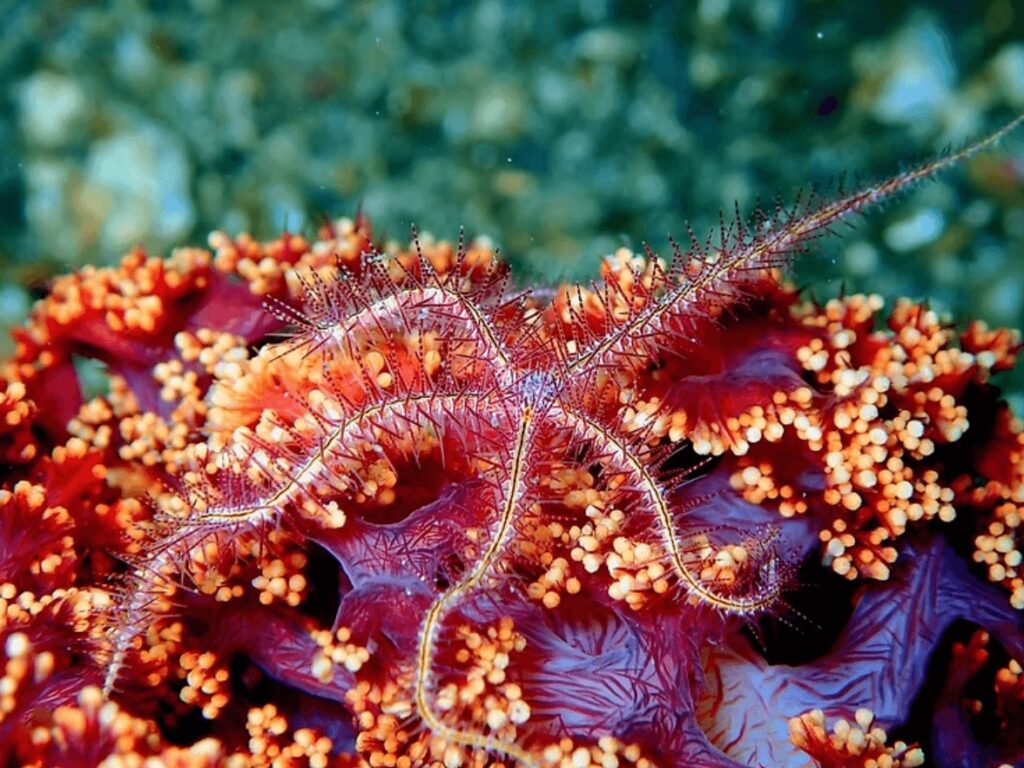
Best dive sites in Lembeh Strait
Hairball
Home to frogfish, seahorses and an impressive array of nudibranchs, this gently sloping black sand site in Lembeh is beloved for its sheer diversity of species. Rare coconut octopuses can also be found here, although it may take some searching.
Hairball is accessible from the shore or by boat and is one of the best places for night diving in Lembeh.
Serena Patah
Located in the middle of the strait, this small island features a shallow coral reef and a sandy slope that leads to a maximum depth of around 25 metres. It’s a wonderful Lembeh dive site for seeing blue-ringed octopuses and wunderpus, as well as blue and black ribbon eels.
As the currents can be strong here on a rising tide, most dive operators head here when it’s falling.
Police Pier
Named after a nearby police station, this silt and rubble-floored dive site is great for finding pipefish, sea moths and frogfish. Flamboyant cuttlefish, wunderpus and scorpionfish are also regularly spotted here.
Meanwhile, mating mandarinfish can be observed performing at dusk. Despite its name, there is no pier at this Lembeh dive site!
Jahir
Usually lacking any current, this beginner-friendly Lembeh dive site is located on the Bitung side of the strait. It is often visited as a night dive.
Aside from hairy frogfish and mimic octopus, you may be lucky enough to find giant frogfish and tawny seahorses. After-dark highlights include orange-bodied tropical bobtail squid and starry night octopus.
Nudi Falls
Unlike many of Lembeh Strait’s best dive sites, Nudi Falls boasts a beautiful soft coral garden, with colourful sponges and Gorgonian sea fans. Pygmy seahorses can be spotted in abundance here, together with various species of crabs, shrimps and pipefish.
As the name suggests, this Lembeh dive site is renowned for its nudibranchs, with many hard-to-find species spotted here.
California Dreaming
Another rare coral site in Lembeh Strait is California Dreaming, which is a wonderful spot for wide-angle photography. This is particularly true as you approach its lower depth of 28 metres.
After documenting its red, orange and yellow displays of soft corals, you can go hunting for critters. These include several different species of seahorses and boxer crabs.
Pantai Parigi
Combining white sand, dark rubble and coral reef, this diverse dive site is ideal for Lembeh underwater photography. Nudibranchs are often found around the hard coral bommies, while rare Ambon scorpionfish lie on the sloping bottom.
With a keen eye (or a great guide), you may also spot minuscule sea dragons. This is definitely one of the best dive sites in Lembeh Strait!
Teluk Kambahu
Comprising three different dive sites, this expansive area features a silty flat bottom that transforms into a black sand slope. It’s a great place for spotting octopuses (coconut, mimic and blue-ringed can all be found here), as well as various crabs, shrimps and frogfish.
There are also several coral bommies that are fascinating to explore.
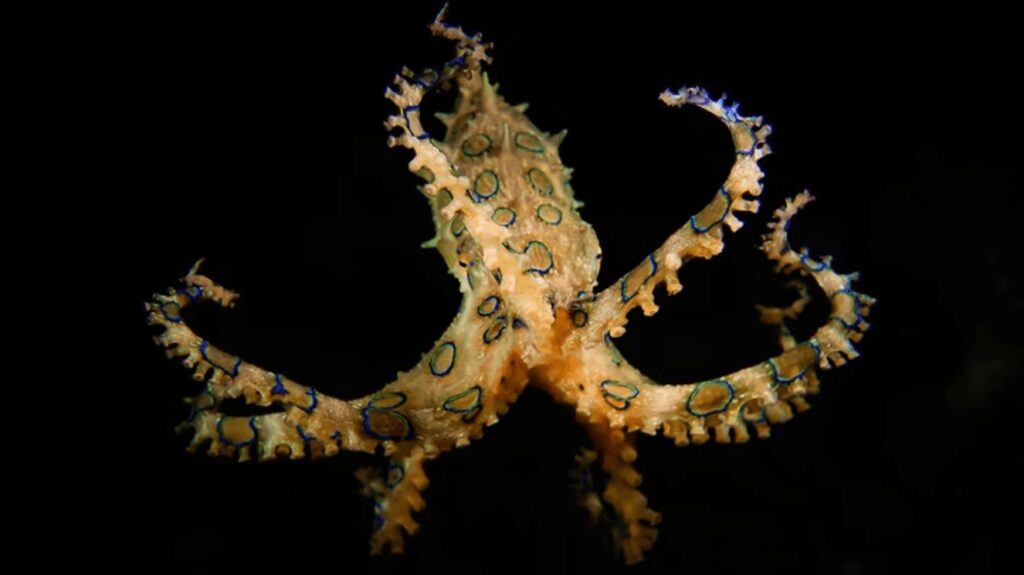
Eco-friendly dive resorts in Lembeh Strait
Lembeh Resort
Tucked away in a private cove, this award-winning Lembeh dive resort is ideal for those seeking a luxury stay. There are wonderful views across the strait from its hillside cottages, some of which come with private infinity pools.
Aside from implementing sustainable practices throughout its operations, this eco-friendly Lembeh resort runs the Lembeh Foundation to support local communities.
Daily dive trips and underwater photography workshops are available with Lembeh Resort’s skilled dive team.
“Lembeh Resort is the yardstick that we measure all other dive resorts against.” – Keith (read more reviews here)
Eco Divers @ White Sands Resort
Overlooking a gorgeous white sand beach, this relatively new Lembeh eco-resort is home to Eco Divers. This PADI 5-Star operator boasts exceptionally skilled guides and a 4:1 diver-to-guide ratio.
The resort features just 12 oceanview cottages with semi-open bathrooms and wooden terraces. Additionally, there’s a swimming pool where you can relax in between dives.
Plentiful meals are served at the alfresco restaurant while massages are available at the on-site spa.
K2 Lembeh Dive Resort
The villas at this eco-friendly Lembeh dive resort are designed in a classic Minahasa style while harmoniously combining contemporary amenities. Each is strategically positioned to offer guests stunning views of Lembeh Strait and the impressive mountain range surrounding Bitung.
The resort is committed to sustainability by reducing single-use plastics and collaborating with local schools to promote eco-friendly practices. This ensures that the positive impact of its activities extends to the surrounding community.
“Fantastic dive resort in Lembeh Strait.” – Miguel (read more reviews here)
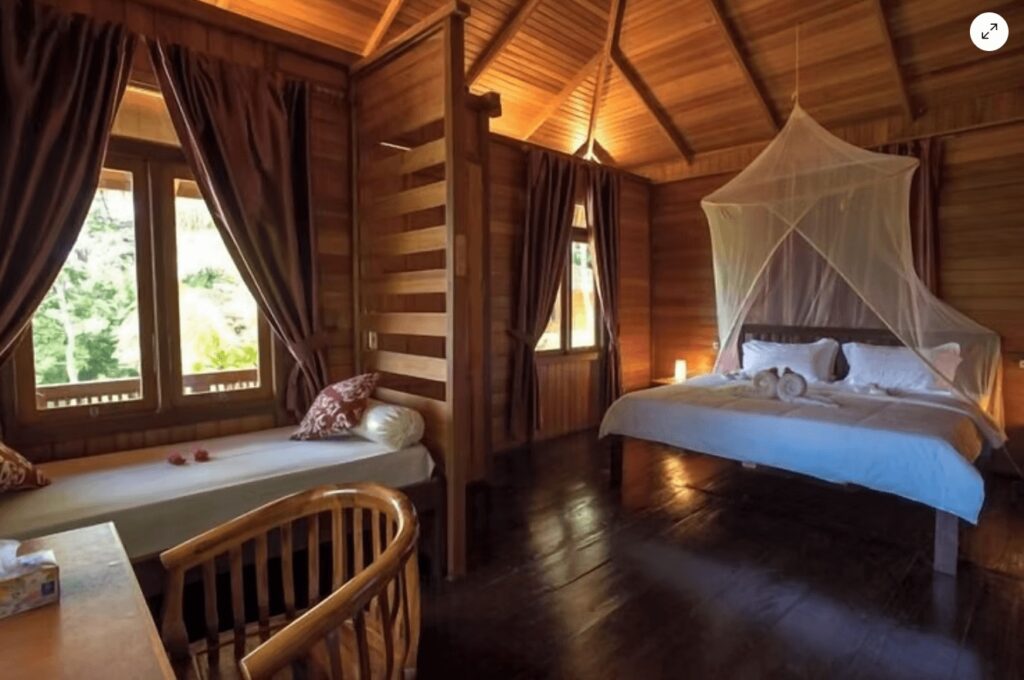
Diving Bangka Island and Bunaken from Lembeh Strait
Lembeh Strait is conveniently located near Bangka and Gangga islands, which are emerging as popular dive spots at the northern tip of Sulawesi. These islands are famous for their stunning reefs, pinnacles and walls. In total, there are over 30 known dive sites to discover.
Some dive centres in Lembeh offer full-day excursions to explore the underwater beauty of Bangka and Gangga. Alternatively, you can choose to stay at one of the eco-friendly resorts on the islands before or after your Lembeh adventure.
On the opposite side of North Sulawesi’s tip lies Bunaken National Marine Park (renowned for its wall dives). Unfortunately, it’s a bit too far for a day trip from Lembeh.
However, if you’re looking to plan a multi-destination dive trip in Sulawesi, you can easily spend a few days wall diving in Bunaken followed by muck diving in Lembeh Strait.
If you prefer to stay in one place while exploring the best dive sites in North Sulawesi, we suggest making Bangka or Gangga islands your base.

Best time to dive in Lembeh Strait
Lembeh Strait offers exceptional diving opportunities year-round, thanks to its sheltered location. The waters here are typically calm and no matter when you choose to visit, you can always find sites with little to no current.
While the wet season runs from November to April and the dry season from May to October, you can expect some rainfall at any time of the year.
The visibility is at its lowest during the cooler summer months of August and September. This influx of cool water benefits the area’s diversity and seems to offer the greatest abundance of marine life.
While most divers will be comfortable in a 3mm wetsuit, those who feel the chill might want to bring a 5mm. Due to the shallow waters, dives in the Lembeh Strait can be quite lengthy.
Strong currents are generally not a concern, as the more exposed sites are avoided during powerful tidal flows.
Water temperatures typically range from 27 to 29°C (80 to 84°F). However, they can dip as low as 25 to 26°C (77 to 79°F) during the coolest months of July and August.
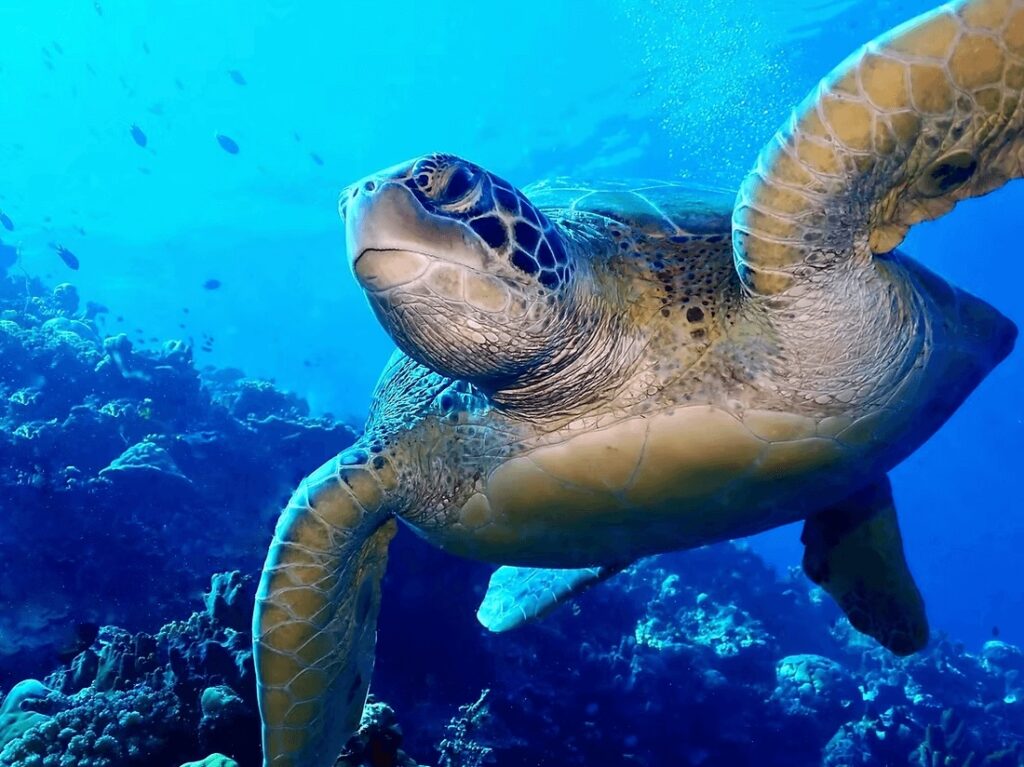
How to get to Lembeh Strait
The nearest airport to Lembeh for international and domestic travel is Manado. It offers regular flights from Singapore and Guangzhou, as well as domestic connections from Jakarta, Makassar and Bali.
Once you arrive in Manado, you’ll need to take a two-hour drive to Bitung and then a quick boat ride to reach your dive resort in Lembeh. You can easily arrange transfers with your dive resort when you make your booking.

FAQs about diving in Lembeh Strait
What makes diving in Lembeh Strait so special?
Known as the “critter capital” of Southeast Asia, Lembeh Strait is the original home of “muck diving”. This specialised type of underwater exploration is focused on the search for rare, bizarre and camouflaged creatures.
Unlike the colourful coral reefs that many divers are used to, the Lembeh Strait presents a very different submarine landscape. It’s dominated by sandy, silty or rubble-strewn bottoms that may appear comparatively lifeless at first glance.
But in this environment thrives a diverse array of weird and wonderful marine life that has evolved ingenious ways to survive here.
Critter diving in Lembeh requires a different mindset compared to traditional reef diving. Instead of finning above reefs or drifting along walls, observing the movement of life around you, the dives tend to be slow and methodical.
It’s about carefully scanning the substrate in search of the strange and elusive creatures that call this unique habitat home.
Perfect buoyancy control is essential to avoid stirring up the fine silt and disturbing the delicate critters that live there, as well as impacting the visibility of those around you. But the payoff is the opportunity to encounter a fascinating array of bizarre and captivating species that may be hard to discover elsewhere.
For muck diving enthusiasts, Lembeh Strait represents a true underwater wonderland. It’s a place where the daily struggle for survival has produced some of the most photogenic marine life on the planet.
When is the best season to dive in Sulawesi?
Diving in Sulawesi is possible throughout the year. But the wet season, which lasts from November to April, can bring heavier rains and stronger currents.
On the other hand, the dry season from May to October features more pleasant weather and calmer seas, making it a great time for diving adventures. Keep in mind that Sulawesi’s tropical climate means that rain can occur at any time.
Additionally, it’s worth noting that strong winds are more likely in August. During this month, dive sites in Bunaken and Bangka, which are more exposed, may face rougher surface conditions that could impact the diving experience and accessibility.
Lembeh usually has a longer wet season. But since the strait is sheltered, the effects are mostly felt at the outer reef sites.
When to go to Lembeh?
Lembeh Strait provides fantastic diving experiences throughout the year, thanks to its protected setting. The waters are usually calm, ensuring that no matter when you visit, you’ll find dive sites with minimal current.
The wet season spans from November to April, while the dry season lasts from May to October. But be prepared for occasional rain at any time of the year.
Visibility tends to be lower during the cooler summer months of August and September. However, this influx of cooler water enhances the area’s biodiversity and often leads to a wider variety of marine life.
What is the water temperature in North Sulawesi?
North Sulawesi boasts a tropical climate, where water temperatures remain steady between 28 and 30°C (82 to 86°F) throughout the year. Most divers will find a 3mm wetsuit sufficient. But those who are more sensitive to cooler temperatures may prefer a 5mm, especially since dives in the Lembeh Strait can be long.
How do you get to Lembeh Strait?
Sam Ratulangi International Airport in Manado offers great connectivity with frequent domestic flights from various Indonesian cities, including Jakarta, Bali, and Makassar. Currently, the only international flights to Manado are from Singapore, provided by Scoot Airlines, and from Guangzhou, operated by China Southern Airlines.
Where is the best dive site in Lembeh Strait?
Some of the most famous dive sites in Lembeh Strait include Nudi Falls and Nudi Retreat. In both places, divers can witness a stunning display of colourful nudibranchs.
Aer Prang and Aer Bajo offer sandy slopes teeming with a myriad of small critters while Angel’s Window has a dramatic drop-off. Critter Hunt site lives up to its name as a premier destination for spotting rare and elusive creatures. Meanwhile, Hairball’s black sand reveals a wealth of tiny, camouflaged inhabitants.
How deep can you dive in Lembeh?
Most of Lembeh’s best dive sites are located between three metres and 28 metres in depth. Due to the relatively shallow depth profile, it’s possible to enjoy longer dives in Lembeh compared to other popular dive destinations in Indonesia.
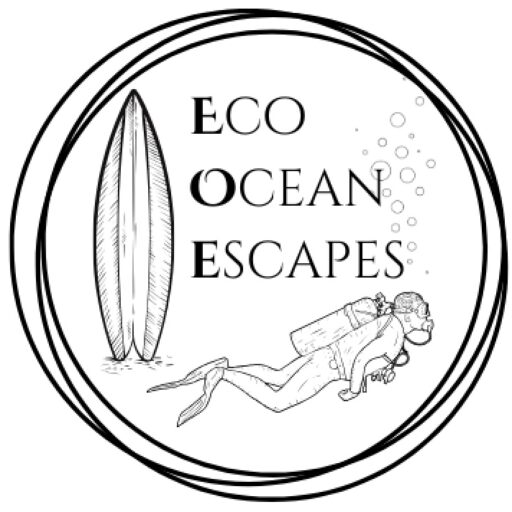
PLAN YOUR TRIP WITH OUR FAVOURITE RESOURCES:
Find hotels and resorts via Booking or Agoda
Book tours and experiences via Viator or GetYourGuide
Find a rental car via Discover Cars
Book flights via Kiwi or Booking
Search for buses and trains via 12Go or Omio
Get travel insurance via SafetyWing
Buy a digital eSIM with Airalo
By purchasing through our links, you’ll be supporting our website at no additional cost to you
About the authors
We are a team of passionate divers and surfers with decades of combined experience in the water and travelling to all corners of the globe. After years of chasing waves and descending into the deep blue, we’ve created this resource to highlight sustainably run surf camps, eco-friendly dive resorts and conservation-focused ocean trips to help inspire your next adventure.
Eco Ocean Escapes was born out of a love of the ocean, an obsession with travel and a concern about the impacts of our adventures on the environments we explore. Despite the benefits that surf and dive tourism can bring to local communities, we recognised that ocean-based adventures are not always managed in a sustainable manner.
Through our articles, we hope to inspire those seeking a responsible surf or dive trip that is all about supporting local communities, preserving our coastal environments and the incredible marine species that inhabit our oceans.
-
Sustainable Surf Tourism and Respecting Local Communities
Surf tourism has exploded over the last two decades. With travel becoming more accessible and social media exposing hidden spots, once-remote breaks in Indonesia, Central America, Morocco and the Pacific Islands are now iconic stops on global surf circuits. While surf travel brings income, jobs and global attention to coastal towns, it can also disrupt…
-
Inspiring Citizen Science Projects for Surfers + How to Get Involved
As surfers, we are intimately connected to the ocean – its rhythms, its wildlife and its health. Because of this relationship, many of us are looking for meaningful ways to protect the marine environments we love. One of the simplest and most impactful ways we can do this is by joining citizen science projects. These…
-
Understanding Marine Protected Areas (MPAs): Why divers should care
If you’ve spent time underwater (as a diver or snorkeller), you’ve probably noticed something: not all sites are beacons of health. Some reefs appear vibrant and full of life, while others show signs of stress – broken coral, few fish or algae-covered rocks. One of the biggest factors shaping the health of our oceans is…
-
Costa Rica: Best Marine Parks for Scuba Divers + Eco Dive Resorts
Costa Rica is a paradise for eco-conscious travellers and underwater explorers are no exception. With its healthy coral reefs, pelagic-rich waters and some of the most progressive environmental policies in the world, the country is a dream destination for those who want to dive responsibly. We’ve been lucky enough to visit Costa Rica several times…
-
Eco-Diving: Best Destinations for Sustainable Scuba Travel
As humans inspired by the underwater world, there is plenty of incentive to protect our coral reefs. Here at EcoOceanEscapes, we want to do our bit to save endangered marine species and keep our oceans free of trash. One impactful action we can all take is to choose sustainable diving destinations. These are nations (or…
-
Eco-Friendly Diving: How to Be a Sustainable Scuba Advocate
Understand the environmental impacts of diving and sustainable scuba practices in this comprehensive guide to eco-friendly diving. Any diver will tell you that being underwater is an incredible experience. It’s a world that not everyone has the opportunity to explore and the encounters we have with marine creatures can be life-changing. Watching manta rays soar…

We are a team of passionate divers and surfers with decades of combined experience in the water and travelling to all corners of the globe.
After years of chasing waves and descending into the deep blue, we’ve created this resource to highlight sustainable surf camps, eco-dive resorts and conservation-focused ocean trips to help inspire your next adventure.
Eco Ocean Escapes was born out of a love of the ocean, an obsession with travel and a concern about the impacts of our adventures on the environments we explore.
